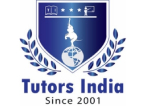Related Services
Our academic writing and marking services can help you!
Project 1:
Project Title:
Description & Research Gap:
Purpose:
• To critically review the delivery techniques for stem cells in orthopaedic applications.
• To explore, design and validate new systems for minimally invasive stem cell delivery.
• To establish the efficacy of delivery techniques, and the targeting capacity of delivery strategies, and to track the fate of stem cells used for tissue repair.
Methods:
• Comparative approaches to injecting cells in comparison with a scaffold-based delivery method.
• Pre-clinical in vivo studies to assess the targeting ability, therapeutic outcomes of delivery techniques.
• Image analysis and histochemical assessment of cell retention and tissue regeneration.
Expected Outcomes:
• Improved evidence to deliver stem cells as minimally invasive with better targeting capacity.
• Recommendations for clinical best practice.
• A framework for developing the regulatory and clinical protocols.
Key References (from your text):
• Abhishek Vaish, Raju Vaishya, Stem cells in orthopaedics and sports injuries: A comprehensive review and future research directions, Journal of Orthopaedic Reports, Volume 3, Issue 4, 2024,100344, ISSN 2773-157X, https://www.sciencedirect.com/science/article/pii/S2773157X24000390.
Project 2:
Title:
Description & Research Gap:
The presence of non-standardised protocols across studies limits reproducibility, regulatory approval, and clinical translation of SCT. This lack of standardisation will impact the ability to compare outcomes and optimise treatment.
Objectives:
• To create standardized methods for MSC isolation and characterization.
• To assess the effects of tissue source and donor variability on cell quality
• To form recommendations for protocols that align with regulatory expectations.
Methods:
• Comparative laboratory study of MSCs from the different tissue sources (e.g., bone marrow, adipose).
• Characterize cells using flow-cytometry and molecular profiling.
• A literature review of clinical studies for protocol alignment.
Expected Outcomes:
• Well-defined procedures for stem cell preparation and use.
• Improved reproducibility in SCT studies
• Faster path to proposed clinical use and regulatory approval.
Key References (from your text):
Project 3:
Title:
Description & Research Gap:
Objectives:
• To conduct long-term follow-up studies for patients treated with SCT.
• To determine what the durability of the regeneration in tissues is and functional outcomes.
• To track any long-term adverse events, if at all.
Methods:
• Multicentre retrospective and prospective cohort studies.
• Imaging and clinical scores of functions related to joints or bones.
• Biopsy and blood tests, for cellular abnormalities or markers of inflammation, respectively.
Expected Outcomes:
• A detailed safety profile of SCT that highlights long-term use and outcomes.
• A general overview of long-term effectiveness trends for the various surgical conditions.
• Evidence-based guidelines for monitoring patients after SCT as treatment.
Key References (from your text):
Abhishek Vaish, Raju Vaishya, Stem cells in orthopaedics and sports injuries: A comprehensive review and future research directions, Journal of Orthopaedic Reports, Volume 3, Issue 4, 2024,100344, ISSN 2773-157X, https://www.sciencedirect.com/science/article/pii/S2773157X24000390.
Project 4:
Title:
Description & Research Gap:
Objectives:
• To study what MSCs do about host immune response.
• To examine the immunosuppressive/immunostimulatory properties of MSC in single burst joint and bone environments.
• To evaluate how to mitigate rejection.
Method:
• In vitro co-culture of MSCs and human donor immune cells
• Cytokine analysis and gene expression profiling
• Animal models to evaluate immune response post-transplant
Expected Outcomes:
• A deeper understanding of what MSCs do with the host immune system.
• Find out new methods to minimize the risk of rejection.
• Better designing of SCT protocols that have immune compatible properties.
Key IEEE References:
Abhishek Vaish, Raju Vaishya, Stem cells in orthopaedics and sports injuries: A comprehensive review and future research directions, Journal of Orthopaedic Reports, Volume 3, Issue 4, 2024,100344, ISSN 2773-157X, https://www.sciencedirect.com/science/article/pii/S2773157X24000390.
Project 5:
Title:
Description & Research Gap:
Objectives:
• To investigate the combined effects of SCT and ortho-biologics (e.g., PRP, scaffold).
• To explore rehabilitation strategies that enhance stem cell function.
• To determine patient functional recovery outcomes and tissue regeneration.
Method:
• Randomized controlled trials comparing SCT alone to the combination with therapy (Ortho biologics and rehabilitation).
• Use of imaging, biomechanical testing, and patient-reported outcomes.
• Rehabilitation protocols developed to modify for individualized approaches in order to promote stem cell mediated regeneration.
Expected Outcomes:
• Evidence-based protocols for integrative treatment solutions.
• Improved timelines and increased success rates for patient recovery.
• Better framework to initiate clinical use of therapeutic combinations.
Key IEEE References:
Abhishek Vaish, Raju Vaishya, Stem cells in orthopaedics and sports injuries: A comprehensive review and future research directions, Journal of Orthopaedic Reports, Volume 3, Issue 4, 2024,100344, ISSN 2773-157X, https://www.sciencedirect.com/science/article/pii/S2773157X24000390.
Study Resources
Free resources to assist you with your university studies!

